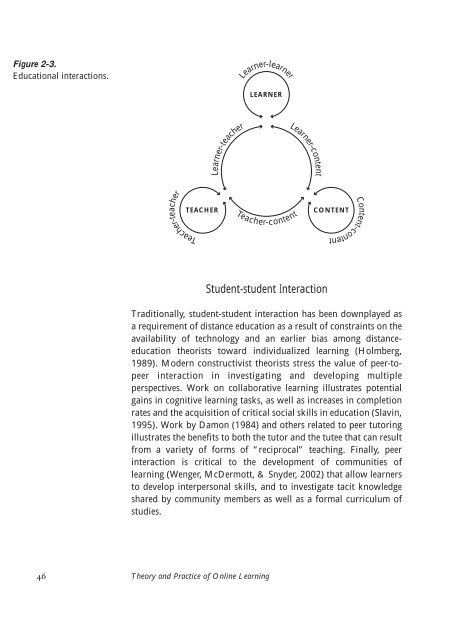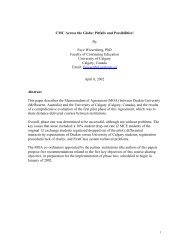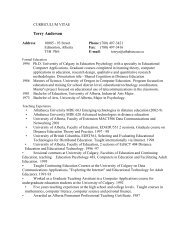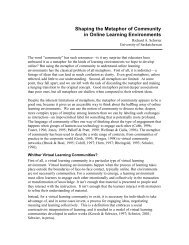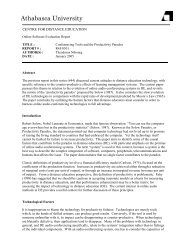Toward a Theory of Online Learning - Centre for Distance Education ...
Toward a Theory of Online Learning - Centre for Distance Education ...
Toward a Theory of Online Learning - Centre for Distance Education ...
Create successful ePaper yourself
Turn your PDF publications into a flip-book with our unique Google optimized e-Paper software.
Figure 2-3.<strong>Education</strong>al interactions.Learner-learnerLEARNERLearner-teacherLearner-contentTEACHERTeacher-teacherTeacher-contentCONTENTContent-contentStudent-student InteractionTraditionally, student-student interaction has been downplayed asa requirement <strong>of</strong> distance education as a result <strong>of</strong> constraints on theavailability <strong>of</strong> technology and an earlier bias among distanceeducationtheorists toward individualized learning (Holmberg,1989). Modern constructivist theorists stress the value <strong>of</strong> peer-topeerinteraction in investigating and developing multipleperspectives. Work on collaborative learning illustrates potentialgains in cognitive learning tasks, as well as increases in completionrates and the acquisition <strong>of</strong> critical social skills in education (Slavin,1995). Work by Damon (1984) and others related to peer tutoringillustrates the benefits to both the tutor and the tutee that can resultfrom a variety <strong>of</strong> <strong>for</strong>ms <strong>of</strong> “reciprocal” teaching. Finally, peerinteraction is critical to the development <strong>of</strong> communities <strong>of</strong>learning (Wenger, McDermott, & Snyder, 2002) that allow learnersto develop interpersonal skills, and to investigate tacit knowledgeshared by community members as well as a <strong>for</strong>mal curriculum <strong>of</strong>studies.46 <strong>Theory</strong> and Practice <strong>of</strong> <strong>Online</strong> <strong>Learning</strong>


